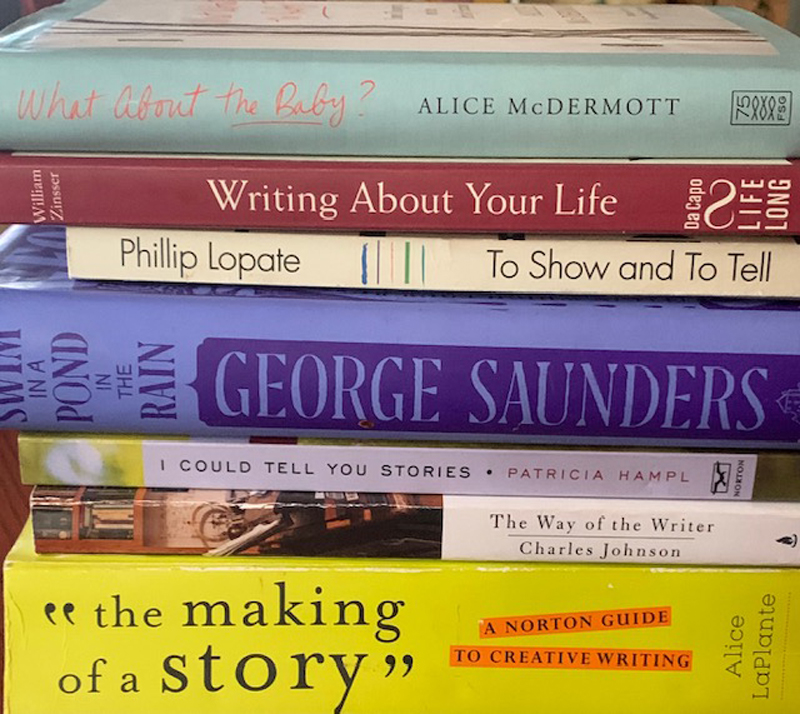Writing is lonely, difficult work, and on top of that, anyone who wants to master the craft of writing fiction has to self-reveal. This surprises people. Many novelists believe that they need only lose themselves in a character, but the truth is that a writer of fiction needs to dig deep in order to feel his or her way in. Every character we create is built around a kernel of ourselves. I believe the keenest challenge of all is to put oneself onto the page, because in doing that, we cannot help but bring to light those facets we desperately want to keep hidden away—because they reveal narrow mindedness, passion, aggression, prejudice, irrationality, or whatever else we prefer not to admit to anyone but ourselves, and sometimes not even to ourselves. But do it we must, if our writing is to be any good at all.
Writing is, at its best, an extreme kind of risk-taking. No less scary sometimes than those activities involving possible bodily injury or death.
Several books on writing sit on my shelves. Each title represents one aspect of what I spend my professional life doing: editing, writing, and coaching authors. There is John Gardner's The Art of Fiction and Renni Browne and Dave King's Self-Editing for Fiction Writers for novelists looking to learn their craft; there are also books for inspiration: Anne Lamott's Bird by Bird, Betsy Lerner's The Forest for the Trees, Mario Vargas Llosa's Letters to a Young Novelist, and a slew of others no less worthy but too numerous to list here, that I use on a regular basis to remind myself and to teach others.
While books on the subject are helpful, if you really want your literary efforts to stand out there is no substitute for the trifecta of writing, rewriting, and showing your work. Your labor is not over after the writing part. Rewriting is next, an arduous process, one that forces you to exercise a different set of muscles, repeatedly (I often tell my clients that the average number of revisions a novel goes through before serious publishing-industry consideration is ten). The next step—showing your work—is the kicker, because it means possible rejection, or additional revisions. Either alternative is painful to contemplate.
But getting back to the writing, Annie Dillard said it beautifully:
"One of the few things I know about writing is this: Spend it all, shoot it, play it, lose it, all, right away, every time. Do not hoard what seems good for a later place in the book, or for another book, give it, give it all, give it now . . . Some more will arise for later, something better. These things fill from behind, from beneath, like well water. Similarly, the impulse to keep to yourself what you have learned is not only shameful, it is destructive. Anything you do not give freely and abundantly becomes lost to you. You open your safe and find ashes."
In summary: Really get in there. Build your muscles and unearth your treasures, muster your courage and your generosity, and bring it all to light. Come on. Show us what you're made of.
- Publishing Convergence: What It Is and What It Means for Us All - July 15, 2013
- On Writing and Revelation - April 29, 2012



